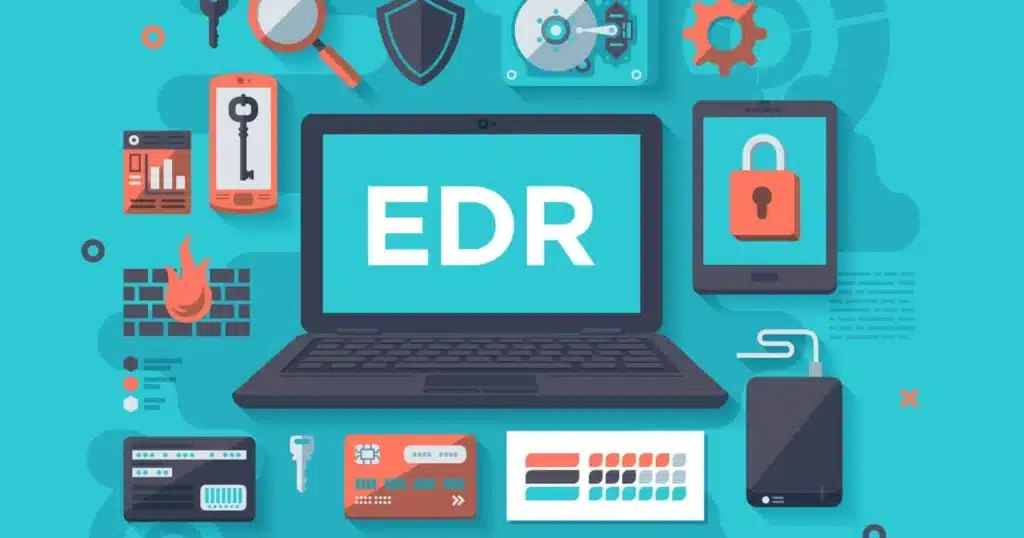
Endpoint detection and response (EDR) is critical to your security arsenal. It helps you proactively find and remediate malware before it can cause severe damage.
Typically, an EDR solution collects leads from across the network and processes them using threat-hunting techniques. It allows the IT team to examine each piece of information and collect context to help them determine whether the activity is malicious quickly.
Ease of Use
EDR software should be easy to use and understand, reducing the time security teams spend on incident response. The solution should also present data meaningfully and guide users through the investigation process.
The EDR dashboard should be one click away and responsive to how administrators work, such as on a desktop or mobile device. It is essential because many administrators work remotely or on the go and need access to their EDR dashboards while traveling.
Selecting a software solution that can handle high-volume endpoint data is also essential. It is necessary for midsize and large businesses, which may have more than 200 endpoints.
Modern EDR solutions should alleviate growing workloads by automatically blacklisting or whitelisting threats, lowering the number of alerts security teams need to investigate. They should also have intelligent machine learning algorithms that regularly update Indicators of Compromise (IoCs) and Indicators of Attacks (IoAs).
Integration With Other Security Tools
Security teams need a comprehensive endpoint security strategy incorporating other tools such as antivirus, firewalls, encryption, and DNS protection. Ideally, the best EDR solution integrates with these other security tools so that they can easily detect and alert to network-wide issues.
The ability to collect telemetry data from all the endpoints on a network is an essential component of EDR solutions. This data can help security teams detect threats and uncover how they evaded existing defenses.
However, this telemetry data must be stored reliably for security teams to use it. A good EDR solution will keep all telemetry data in a repository for up to 365 days so that security teams can revisit previous incidents to see if they have any new threats that could be missed.
Once a malicious file has been detected, it is critical to identify how it penetrated the perimeter. With this ability, it will be easier to discover how the file passed security measures and prevent future attacks that take advantage of a vulnerability in a system or device.
Scalability
Enterprise software must have the ability to scale. It reduces maintenance costs and improves user experience. It also enables rapid deployment of new security tools to meet changing business requirements.
An EDR solution must be scalable to handle growing traffic and remote devices. It requires ongoing performance testing to identify bottlenecks and determine whether the solution can scale up or down in response to user requests.
It must be able to track all file activity and correlate past and present incidents for instant detection and remediation. It should also have visibility and the ability to restore systems to a previous state.
It should also be able to protect the entire network of hundreds of thousands of endpoints. It requires high-end intelligence and ML-powered correlation of malicious activities to find potential threats and eliminate them.
Cloud Support
Cloud computing services are a large and growing category of applications that run on top of the internet. They offer a convenient and affordable way to access information and software without on-site infrastructure or hardware.
EDR software offers cloud support by providing a means for security analysts to monitor their endpoints and respond to threats in real-time. It also allows them to automate certain incident response activities based on predefined rules.
Advanced EDR solutions may even self-clean and eliminate infections. These features help security teams protect systems from threats and reduce their workload.
The initial step to becoming a cloud support engineer is frequently earning a bachelor’s degree in computer science, software engineering, or a similar subject. Additional studies in system design and administration, database management and network architecture can also be helpful.
Support For Multiple Operating Systems
EDR security solutions collect and analyze data on network endpoints like laptops, desktops, mobile devices and servers. They send that information to a centralized location, usually represented by a cloud-based platform.
The collected data is then analyzed by algorithms and machine learning technology to identify abnormalities. It enables security teams to detect and respond to threats quickly and effectively.
A robust EDR solution can contain advanced malware before it can test the boundaries of network segmentation. It is essential to prevent the lateral movement of advanced threats such as ransomware.
A good EDR tool will also be able to keep up with modern cyber threats by detecting new malware that traditional security tools would miss. In the past, traditional cybersecurity technologies were sufficient to defend against viruses and hacking attempts. But today’s cyber dangers are more pervasive, advanced, and devastating, necessitating more robust security measures.
